Note: This is an article that ran in the 2018 Buffalo Beer Week Guide, as written by Matt. The focus topic of Buffalo Beer Week in 2018 is beer history and education.
*****
To the general public, it might seem like craft beer is everywhere these days. As a brewery, even we are occasionally surprised at the bars, restaurants, and retailers that are interested in our beer. We’ll get often get comments like “Hey, my favorite bar X just got your beer on, I drink it all the time!” and so forth.
This shouldn’t really come as a surprise. According to the Brewers Association, craft brewers experienced 117% growth from 2011 (11.5 million barrels of beer produced) to 2017 (25 million barrels produced).
Of course, Western New York isn’t immune to this phenomenon. According to the Buffalo Niagara Brewers Association, WNY could claim five local breweries in 2011 (Buffalo Brewpub, Ellicottville Brewing Company, Flying Bison Brewing Company, Pearl Street Grill and Brewery, and Southern Tier Brewing Company). Today there are 29 in operation, with 7 (at least?) in planning. These local breweries continue to experience growth as well; according to Buffalo Business First, local breweries produced about 134,985 barrels of beer in 2016, versus 156,390 barrels in 2017, or 16% growth.
Despite this growth, the surprising part of the story is that craft beer is still the minority preference for most beer drinkers, as craft beer only represents 13% of the market on a volume basis (23% by dollars). For every craft beer you drink, there are 7 to 8 people drinking a “macrobrew”.
For craft brewers, the challenge has been, and continues to be: how do we convert macro drinkers to micro drinkers? For myself, and for the BNBA, we feel the path lies through education, which is the theme of this year’s Buffalo Beer Week.
“But,” you’re preparing to argue, “it’s beer! How much could there be to learn? And besides, I don’t want to think about my beer, I just want to drink it!” For sure, there is a time and place for drinking, we won’t argue with that. But, craft beer is so much more of an experience: from the tasting, to the process, to the stories behind why your local breweries opened, we’d argue that drinking craft beer is just plain better for your mind.
For someone new to the journey of craft beer, it helps if they have a knowledgeable and reliable tour guide. As brewers, our jobs must be more than just combining water with grains, and dissolving hops and yeast into wort. We must be these beer Sherpas, guiding our guests with colorful stories about our beer, our brands, and our history.
For most new craft beer drinkers, beer falls into three categories: IPA = bitter, Dark = Guinness, Lager = Blue. However, according to the Brewers Association, there are over 150 different styles of craft beer. How would a novice even begin to navigate the differences between all of these? This is where the brewery can provide value. Guests will sometimes tell us “I don’t really like beer.” We usually reply with “You don’t really like beer yet.” I’d say we’re successful in finding a match about 99% of the time.
In addition to beer education, we must tell the stories of our history and brand. Every brewery brings a unique perspective and style to the art and science of making beer, and all of those stories are driven by a passion to create something great. These stories make drinking the beer fun, interesting, and memorable.
A final word to breweries, and perhaps even more so, to beer drinkers. Brewers must continue to innovate and break the boundaries of what beer is; and drinkers must continue to be open minded about these styles. The IPA “haze-craze” has resulted in excitement over a single style of beer; but craft beer has so much more to offer than a single style, and if craft brewers produce only one style of beer, we’re not much different than macro breweries that only produce adjunct lagers. Local breweries like 42 North (with their Barrel House), Resurgence (with their Kegs and Eggs series), and Community Beer Works and Thin Man, who both frequently collaborate with other breweries, are good examples of the spirit of innovation alive in our local beer scene. Beer drinkers: let go of your expectations and learn to appreciate the range of flavors beer is capable of. It’s one of the best things about beer, really!
We’re truly living in a golden age of craft beer, where there are an amazing number of choices available to the consumer. Personally, I dream of a time where locally crafted beer is the only choice at every bar, restaurant, and retailer; funny enough, this used to be the case hundreds of years ago. However, as long as our breweries continue to lead the way by educating, I feel confident my dream will become a reality.
